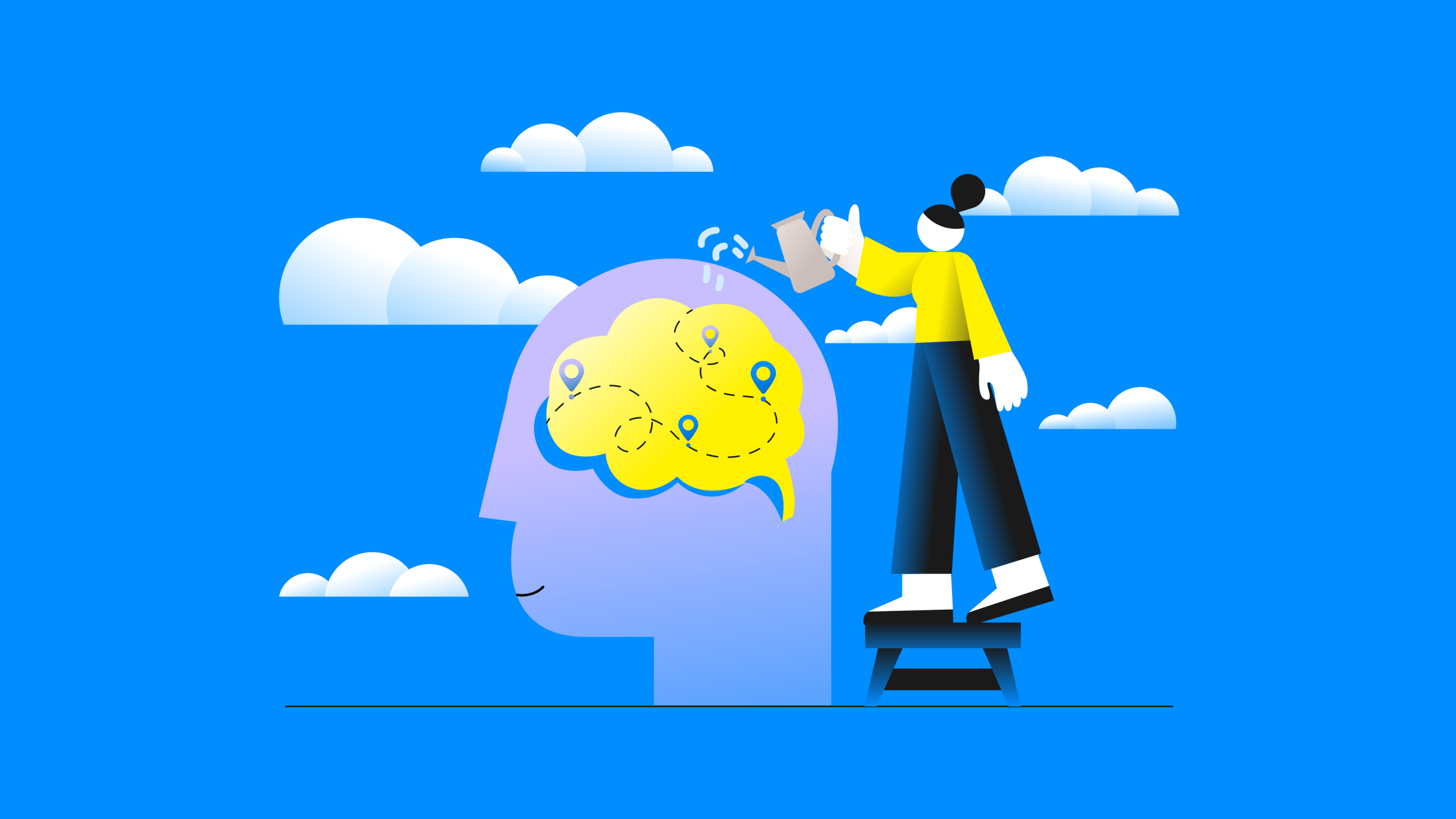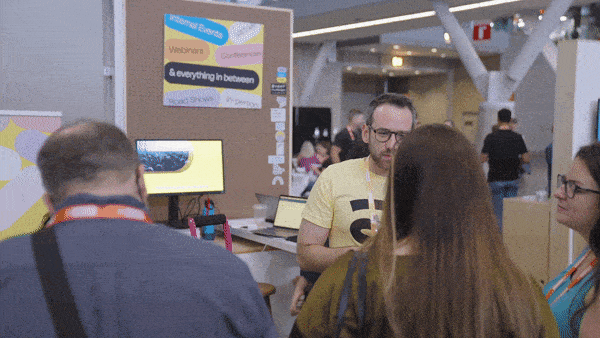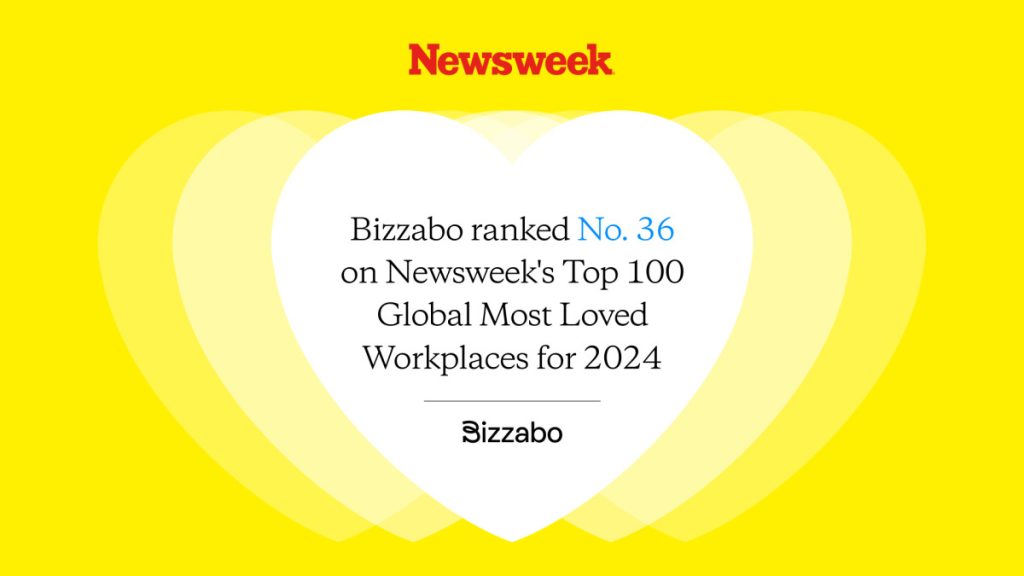6 Steps for Mapping a Meaningful Event Attendee Journey


An event isn’t just a one-time thing that begins when the spotlight shines and ends when attendees return home. It starts long before and lasts long after, from the first announcement to the final feedback.
Considering that 80% of event professionals measure event success through attendee engagement and satisfaction, crafting an event that guarantees engagement and an unforgettable experience is paramount.
This blog article will take you through six steps to mapping a killer event attendee journey that aligns with the emotions and expectations of your attendees, enabling you to execute an event that stays with them forever.
What is an event attendee journey map?
An event attendee journey map is a dynamic roadmap that outlines the course of personalization and customization to provide attendees with an engaging and one-of-a-kind experience.
Ninety percent of leading marketers say personalization boosts business profitability. In line with this, more than 56% of consumers express the likelihood that they will become repeat buyers after personalized experiences, showing a 7% year-over-year increase.
Now, imagine tailoring an event so finely that it resonates uniquely with each attendee, creating a bond that’s hard to break. That’s precisely what the event attendee journey map does — it reveals the nuances of every participant’s journey, from their initial interaction to the ultimate farewell.
What are the benefits of mapping the attendee journey?
In event planning, attendee journey mapping is more than a tool. It is a collection of attendee-centric event strategies that ignites captivating experiences and cultivates a community of dedicated people.
The following benefits clearly showcase how attendee journey mapping profoundly transforms the experience for both attendees and event planners:
- Enriched attendee experience: By understanding the flow of the attendee journey, you can craft moments that resonate personally, leaving attendees satisfied and enchanted.
- Anticipation of the subsequent encounter: A staggering 62% of business leaders acknowledge that personalized efforts lead to improved customer retention. Whether it’s your next event or any brand interaction, the event journey map transforms them from attendees to family members, eagerly awaiting the next chapter.
- Creation of event evangelists and champions: The event journey map gives rise to event advocates and champions: enthusiastic individuals who carry the event’s spirit beyond its confines, sharing their experiences with the external audience.
6 Steps For Creating an Event Attendee Journey Map
Let’s walk through the process of making an event map to create an exciting participant journey.
Step 1: Set a Clear Objective
Even the most skilled artists must define their goals and objectives before starting on a blank canvas.
Be crystal clear about why you are embarking on this event journey. Is it to enhance attendee satisfaction, amplify event ROI, or perhaps forge new connections? Without a defined objective, you risk losing your way before you begin.
Step 2: Define Your Personas and Highlight Target Customers
Every attendee has a motive, a dream they hope your event will fulfill. Whether it’s gaining industry insights, finding potential partners, or simply having a good time, this goal shapes their event experience.
Your task is to define your audience’s various personas and create an experience where they are not just attendees but active participants with a unique journey.
Let’s explore how to break down your target audience into personas and approach them with a resonant strategy. Here are some questions you might ask while defining your ideal attendees:
- What are their ages?
- What are their demographics?
- What are their industries and job titles?
- What are their interests?
- What are their goals for attending your event?
- What are their pain points/challenges?
- What kind of content do they like to receive?
Based on these questions, here are three examples of attendee personas you might end up with:
Tech Enthusiast Conference Attendee Persona Example

Health and Wellness Retreat Attendee Persona Example
- Demographics: 30-55, mix of urban and suburban, all genders
- Industry: Health, fitness, wellness
- Job Roles: Health coaches, fitness instructors, nutritionists, wellness bloggers, healthcare professionals
- Interests: Mindfulness, yoga, holistic health, clean eating, stress reduction, fitness, self-care
- Goals: Learning holistic health practices, relaxation, networking in wellness industry
- Pain points/challenges: Managing stress, maintaining work-life balance, navigating conflicting wellness information, finding time for self-care
- Preferred content: Yoga and meditation sessions, interactive cooking classes, workshops on stress management, outdoor activities, wellness product showcases
Financial Planning Seminar Retreat Attendee Persona Example
- Ages: 40-65, primarily suburban, all genders
- Industry: Finance, investments, retirement planning
- Job roles: Financial advisers, retirement planners, accountants, individuals nearing retirement
- Interests: Financial literacy, retirement planning, investment strategies, wealth management
- Goals: Gaining insights into retirement planning, learning about investment options, connecting with financial experts
- Pain points/challenges: Navigating complex retirement plans, making informed investment decisions, dealing with economic uncertainty, planning for a comfortable retirement
- Preferred content: Expert-led presentations on retirement income strategies, investment workshops, case studies on successful financial planning, one-on-one consultations with advisers
It’s also essential to gather feedback and data from previous events. Historical data shapes your mapping journey by capturing what resonates with your audience and what might need a touch-up.

Step 3: Define Stages and Identify Goals for Each
Your event journey is a composition of stages, each resonating with a specific purpose. Here’s how you can nail the mapping process by determining the goals for each stage.
Pre-event Stage
Envision your event’s ultimate purpose. What’s the big win you’re after? Keep this in your thoughts as you lay out the groundwork. Then, craft messages that spark curiosity and excitement. Make attendees feel that they will be a part of something unique. Your words set the stage for an event they will want to attend.
Lastly, tease, hint, and share sneak peeks through pre-event marketing strategies. Create excitement and get attendees talking before the event even starts.
Registration and Onboarding
Offer easy, personalized event registration. A straightforward process shows you care about attendees’ time. Provide guides and resources to help attendees prepare. When they’re informed, they can fully engage.
During the Event
Design a space that practically begs to be explored. When engaging elements surround attendees, they won’t just remember the event; they’ll relive it.
Recommend sessions based on their interests, and watch their eyes light up. With a personalized touch, you’re not just guiding them; you’re creating a journey that’s uniquely theirs. Help them build lasting relationships by facilitating networking opportunities to meet and chat. Create a room buzzing with conversations where connections are formed and ideas flow freely.
Post-event Stage
The impact of a sincere “thank you” is unimaginable. Express your gratitude to attendees for being a part of your event by sending personalized emails and surveys.
Don’t make your attendees wait to discover more, even after the curtains have closed. Ensure their engagement extends beyond the event’s timeframe by giving them access to event materials and resources.
Keep the spark alive by turning a one-time event into an ongoing source of value and inspiration. You can create dedicated platforms to maintain a steady flow of messages, insights, and updates — be it a vibrant online community, a discussion forum, or a social media group.
Step 4: List Touchpoints and Ways To Maximize Every Interaction
Every touchpoint is a potential attendee magnet. To ensure a full house, it’s vital to map out and maximize these touchpoints while ensuring every potential attendee is included.
Let’s explore how to infuse value into each interaction.
Pre-event Touchpoints
- Website: Before your event starts, attendees visit your website for a sneak peek. Spruce it up with eye-catching event info, and make attendees curious to know more. Read our guide about how to build the perfect event landing page.
- Emails: Send attendees emails with hints and teasers that get them all pumped up. Tease, tease, tease! Drop hints about what’s in store, andkeep them wanting more.
- Social media: Let’s remember the power of social media. Trigger their emotions with interactive posts that are impossible to resist.
- Webinars: Host webinars that give a sneak peek into the event’s offer. Each webinar can focus on a specific topic to appeal to various attendee segments.
Live Event Touchpoints
- In-person interactions: When the event is live, set a vibrant atmosphere through thought-provoking discussions, Q&A sessions, or even surprise guest speakers. These in-person interactions allow attendees to share their “a-ha” moments, creating mini-communities within the larger event.
- Swag: Surprise attendees with event-specific swag that speaks to their preferences. This could include branded merchandise, materials, or tools related to their field. Consider providing swag that has practical value beyond the event itself. For instance, if your event is about productivity, offer notebooks or planners that attendees can use daily.
- 1:1 consultations: Offer attendees the chance to have 1:1 calls with experts, mentors, or event organizers during the event to connect them with customized advice that aligns with their interests.

Post-event Touchpoints:
- Social media buzz: Keep the conversation alive by posting flashbacks. Post thought-provoking questions or share event insights that spark fresh dialogues among attendees.
- Blog interactions: Leverage blog posts related to your event’s theme. Write articles summarizing event content, discussions, and success stories. Address the different personas’ interests and pain points.
- Ebooks and guides: Compile event highlights, key takeaways, and in-depth insights into ebooks or downloadable guides. These can be tailored to different personas’ needs.
Step 5: Decide How You’ll Gather Feedback To Determine Pain Points and Friction
Once you’ve mapped out your touchpoints, make a plan for gathering feedback about the attendee’s preferences and impressions. The qualitative feedback you receive from your audience will help you navigate through their likes, dislikes, and pain points.
Here are 10 questions to ask:
- Was the event content relevant to your interests and needs? How did it align with your expectations?
- Were there specific sessions or workshops that you found particularly valuable or applicable to your professional/personal growth?
- Did you have opportunities to connect with peers, speakers, or sponsors that resonated with your industry or interests?
- How did you feel about the level of personalization in the event? Did you receive information or recommendations that felt tailored to you?
- Were there any aspects of the event where you wished for more personalization or customization?
- Did you find the networking opportunities suitable for your goals? Were there any specific connections you made that you found valuable?
- Were the event communications clear and relevant? Did you receive the information you needed at each stage of the journey?
- Did the event organizers value your feedback and opinions? Were there instances where you saw your input implemented?
- Were there any touchpoints in the journey where you encountered challenges or felt that your needs were not adequately addressed?
- Overall, how would you rate your personalized experience during the event on a scale of 1 to 10, with 10 being highly personalized and meaningful?
Step 6: Improve Your Attendee Journey and Map for the Next Event
As you wrap up this journey, it’s vital to refine and enhance the event experience design for your attendees in the future. Here’s how you can do it:
- Define key performance indicators (KPIs): Set clear KPIs to measure attendee satisfaction. This could involve metrics like post-event surveys, net promoter scores, or social media engagement. Defining these indicators will provide a quantitative measure of your attendees’ experience.
- Analyze feedback and data: Gather feedback from attendees through surveys, reviews, and data collected during the event to analyze their strengths and weaknesses in the attendee journey.
- Iterate and refine: Focus on addressing pain points and refine your event journey to tackle minor adjustments and major overhauls to ensure a smoother experience next time.
- Brainstorm ideas and implement: Gather your team and brainstorm creative solutions to enhance attendee satisfaction. Explore ways to streamline registration, personalize communication, and optimize event logistics. Consider tech solutions for smoother check-ins or interactive sessions.
- Evaluate impact: Track how the changes impact attendee satisfaction and other relevant KPIs. Are attendees finding it easier to navigate the event? Are they more engaged with the content? Continuously assess the success of your improvements.
- Repeat the process: Event planning is a dynamic process. Use the lessons learned, and data gathered to inform the planning of your next event. Regularly iterate and refine the attendee journey to consistently deliver exceptional experiences.
3 Tips for Building Your Participant Journey Map
Building a participant journey map is an indispensable aspect of event planning that ensures attendees have a cohesive and satisfying experience. By deeply understanding your audience, mapping out touchpoints, and offering personalized experiences, you can create an event that stands out, fosters engagement, and builds lasting relationships.
Here are three ways to streamline the process of mapping attendee journeys so you can move on to the next stage of event planning:
- Leverage event management software and tools for a seamless attendee experience, from tracking your attendees to check-ins and real-time updates.
- Use data analytics and automation providing attendees with personalized recommendations and engaging experiences.
- Establish feedback loops to gather insights and achieve consistent, continuous improvement.
With a thoughtful attendee journey map, you’ll elevate your event planning game and deliver a memorable event that resonates with your participants long after the curtains close.
Free Attendee Journey Mapping Template
Understanding the participant journey is paramount for creating remarkable attendee experiences. Our free Attendee Journey Mapping Template helps make it easy.
This invaluable resource will guide you through crafting a participant journey map that enhances attendee engagement, personalization, and satisfaction. You can ensure a seamless and meaningful journey by visualizing each step of your attendees’ experience, from their initial interaction with your event to post-event follow-up.
Download our template now to take your event planning to the next level and create an event that resonates deeply with your attendees.
Get Started: Map a Meaningful Event Attendee Journey
Now you know what precisely constitutes an event attendee journey map and why it holds the potential to revolutionize the landscape of event planning. The secret behind a meaningful participant journey map lies in a personalized approach that focuses on attendee-centric strategies, nurtures loyalty and advocacy, and leads to long-term event success.
At Bizzabo, we’re here to help you give attendees the most personalized journey possible so you stand out from other events and keep participants raving about your event for months to come. How? With Bizzabo’s Klik SmartBadge™, which powers personalized engagement at events like INBOUND 2023.


